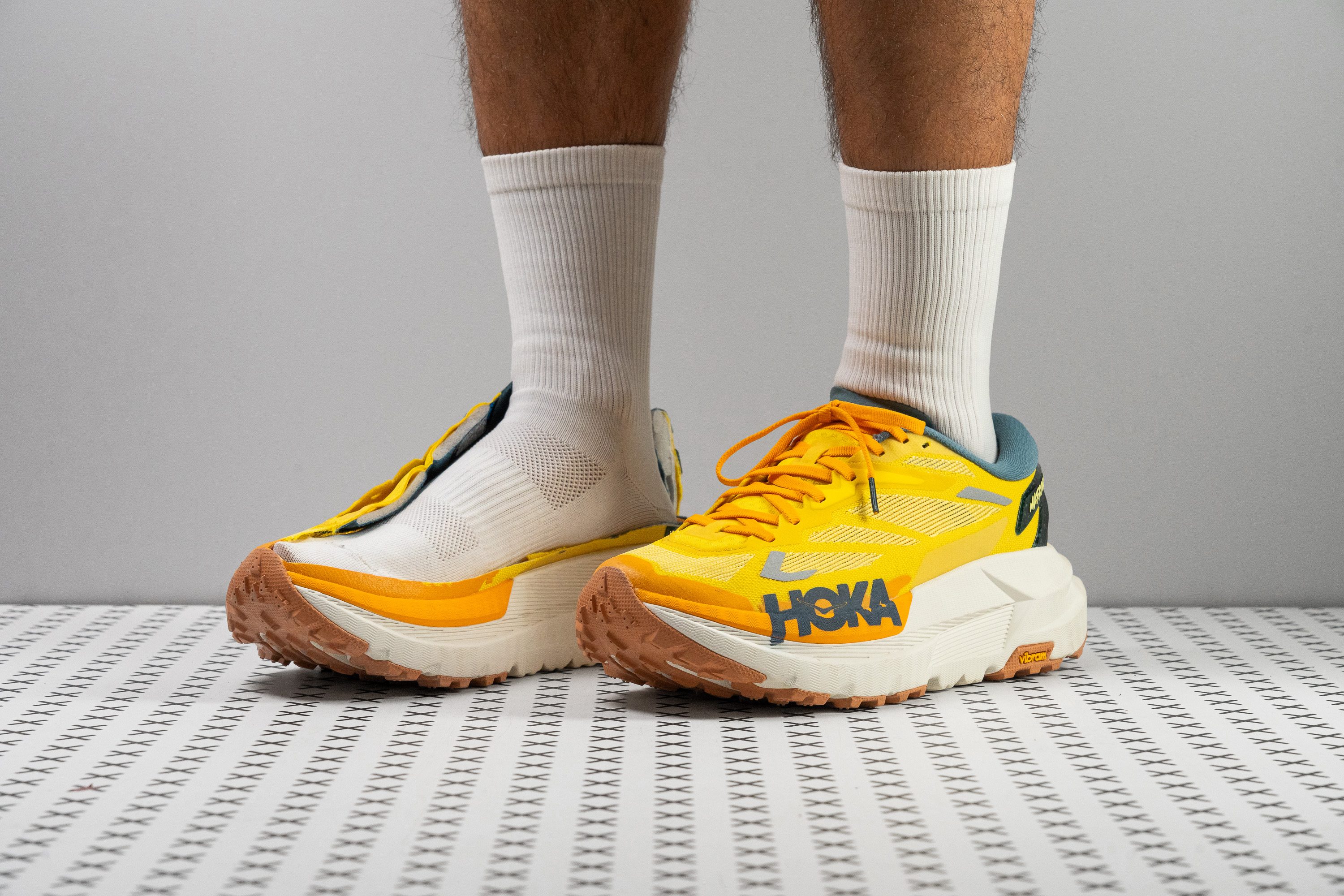Our verdict
Pros
- Massive cushioning with nearly 50 mm of stack
- Strong energy return thanks to PEBA foam
- Vibram Megagrip outsole
- Surprisingly good stability
- Solid airflow for summer days
- High-quality materials from heel to toe
- Premium TPEE insole
- Boundary-pushing design
Cons
- Very heavy on foot
- Too tall for technical terrain
- Heel lockdown could be better
- High price
Audience verdict
Comparison
The most similar running shoes compared
+ + Add a shoe | |||||
|---|---|---|---|---|---|
| Audience score | 86 Good! | 90 Superb! | 90 Superb! | 89 Great! | |
| Price | $225 | $200 | $250 | $260 | |
| Trail terrain | LightModerate | LightModerate | Light | LightModerate | |
| Arch support | Neutral | Neutral | Neutral | Neutral | |
| Weight lab Weight brand | 11.8 oz / 335g 12.1 oz / 343g | 8.7 oz / 248g 8.8 oz / 249g | 9.1 oz / 258g 9.2 oz / 261g | 10.5 oz / 299g 10.1 oz / 286g | |
| Lightweight | ✗ | ✓ | ✗ | ✗ | |
| Drop lab Drop brand | 10.6 mm 8.0 mm | 13.0 mm 10.0 mm | 10.3 mm 5.0 mm | 11.8 mm 8.5 mm | |
| Strike pattern | Heel | Heel | Heel | Heel | |
| Size | - | Half size small | True to size | True to size | |
| Midsole softness | Balanced | Soft | Soft | Soft | |
| Difference in midsole softness in cold | Small | Normal | Normal | Small | |
| Plate | Carbon plate | Carbon plate | Carbon plate | Carbon plate | |
| Toebox durability | Bad | Decent | Very bad | Very bad | |
| Heel padding durability | Good | Decent | Good | Good | |
| Outsole durability | Good | Good | Decent | Good | |
| Breathability | Moderate | Moderate | Breathable | Moderate | |
| Width / fit | Wide | Medium | Medium | Medium | |
| Toebox width | Medium | Medium | Narrow | Wide | |
| Stiffness | Stiff | Stiff | Stiff | Stiff | |
| Torsional rigidity | Stiff | Stiff | Stiff | Stiff | |
| Heel counter stiffness | Stiff | Moderate | Moderate | Moderate | |
| Lug depth | 3.0 mm | 2.9 mm | 2.7 mm | 3.0 mm | |
| Heel stack lab Heel stack brand | 47.3 mm 49.0 mm | 34.7 mm 36.5 mm | 44.7 mm 44.0 mm | 36.6 mm 38.0 mm | |
| Forefoot lab Forefoot brand | 36.7 mm 41.0 mm | 21.7 mm 26.5 mm | 34.4 mm 39.0 mm | 24.8 mm 29.5 mm | |
| Widths available | Normal | Normal | NormalWide | Normal | |
| For heavy runners | ✓ | ✗ | ✗ | ✗ | |
| Season | All seasons | All seasons | SummerAll seasons | All seasons | |
| Removable insole | ✓ | ✓ | ✓ | ✓ | |
| Orthotic friendly | ✓ | ✓ | ✓ | ✓ | |
| Ranking | #186 Bottom 49% | #66 Top 18% | #62 Top 17% | #86 Top 24% | |
| Popularity | #193 Bottom 47% | #320 Bottom 13% | #301 Bottom 18% | #202 Bottom 45% |
Who should buy
Based on our testing, we found that the Mafate X is a great match for:
- Runners who stay on easy trails or gravel roads and want maximum protection and maximum stack without worrying about the maximum price.
- Heel strikers who need plenty of cushioning underfoot, as the higher drop gives extra support in every landing.
- Those who want high-end tech from supershoes, like a carbon plate or PEBA foam, but in a trail package and do not need a fast or agile feel.

Who should NOT buy
We believe the Mafate X is not the best pick if price matters to you. The shoe comes at a sky-high cost, and we found that dropping over 200 dollars for a trail shoe can feel hard to justify. From our perspective, the HOKA Mafate 5 and the ASICS Trabuco Max 4 are more reasonable options.
We also think the heavy build makes the Mafate X too clunky for faster paces, as we discovered a slow and ultra-stiff ride in our testing. If you want a more agile and race-ready option, the HOKA Tecton X 3 delivers similar cushioning with far less weight. Or, if saving money matters, the Saucony Xodus Ultra 4 is a slightly lighter yet highly-capable alternative at a much better price.
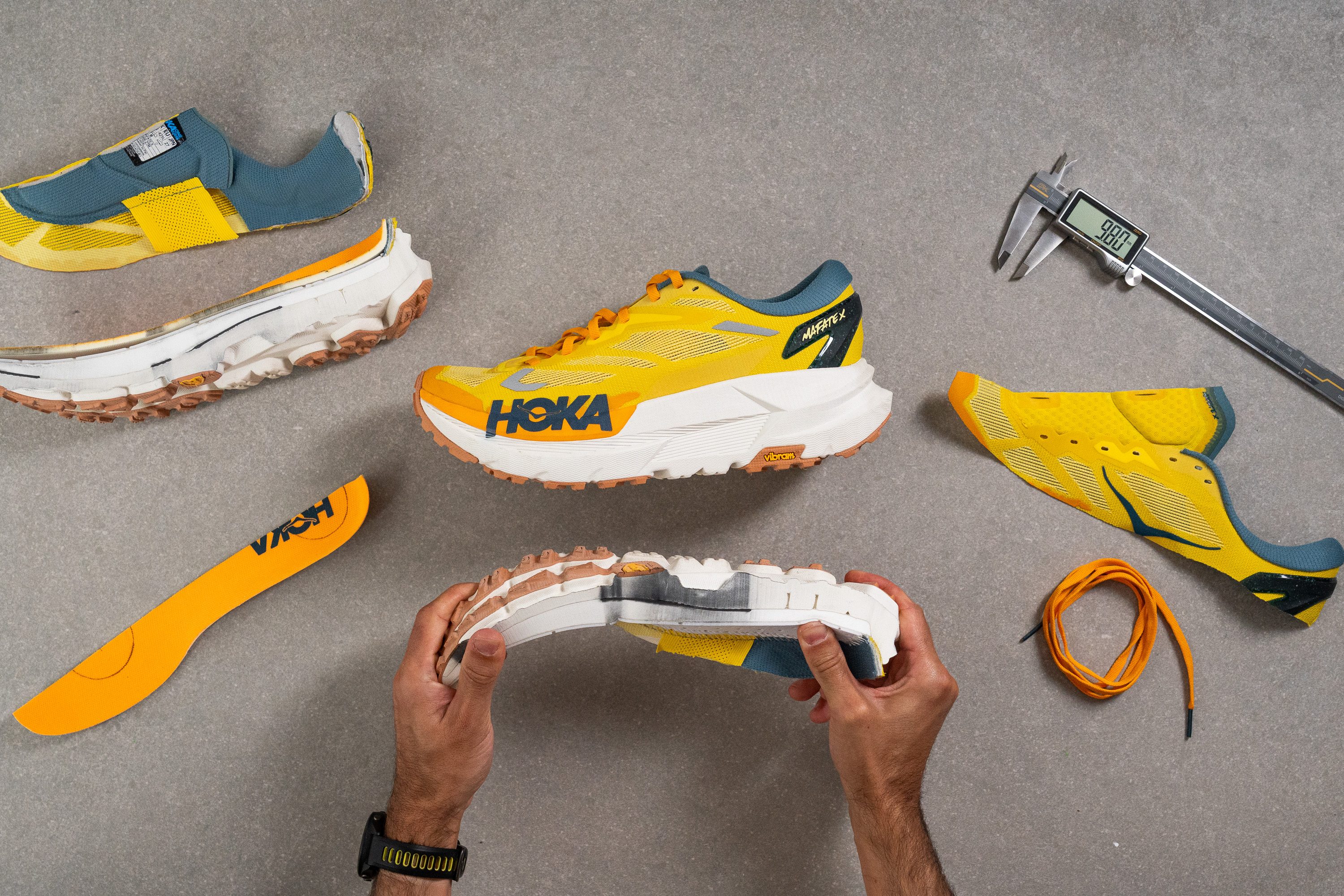
Cushioning
Shock absorption
The HOKA Mafate X can handle any runner at any distance thanks to its strong shock absorption. We expected both measurements to sit well above the average, and we recorded 136 SA in the heel and 127 SA in the forefoot, fully ready for ultras.
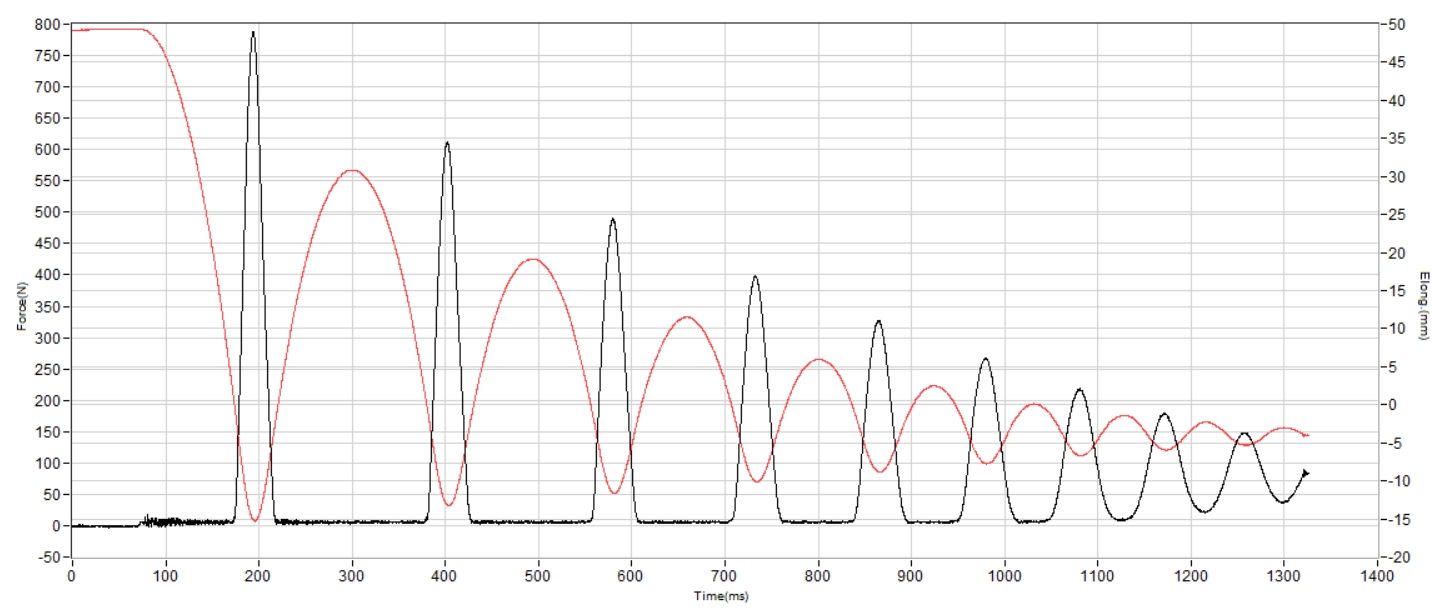
| Mafate X | 136 SA |
| Average | 122 SA |
Energy return
Energy return is very good for a trail shoe, and we perceived that even during our first run. When we tested the Mafate X with the ASTM F1976 protocol, we discovered a strong outcome in the heel at 62.0% along with an even better 68.2% in the forefoot, giving the shoe a lively and ultra-springy feel.
The reason behind these impressive numbers and the difference between both zones is the mix of supercritical EVA and PEBA foam, with more PEBA placed in the forefoot, which explains the extra-energetic and responsive behavior in that area.
| Mafate X | 62.0% |
| Average | 55.6% |
Heel stack
The max-stack trail category still has only a few models, but we believe most brands will offer at least one option within a year or two. HOKA, along with ASICS, is clearly pushing the market in this direction.
Staying true to that plan, the Mafate X delivers an impressive 47.3 mm of heel stack that we found mind-blowing, especially considering that a few years ago we would have thought any designer proposing this was crazy.
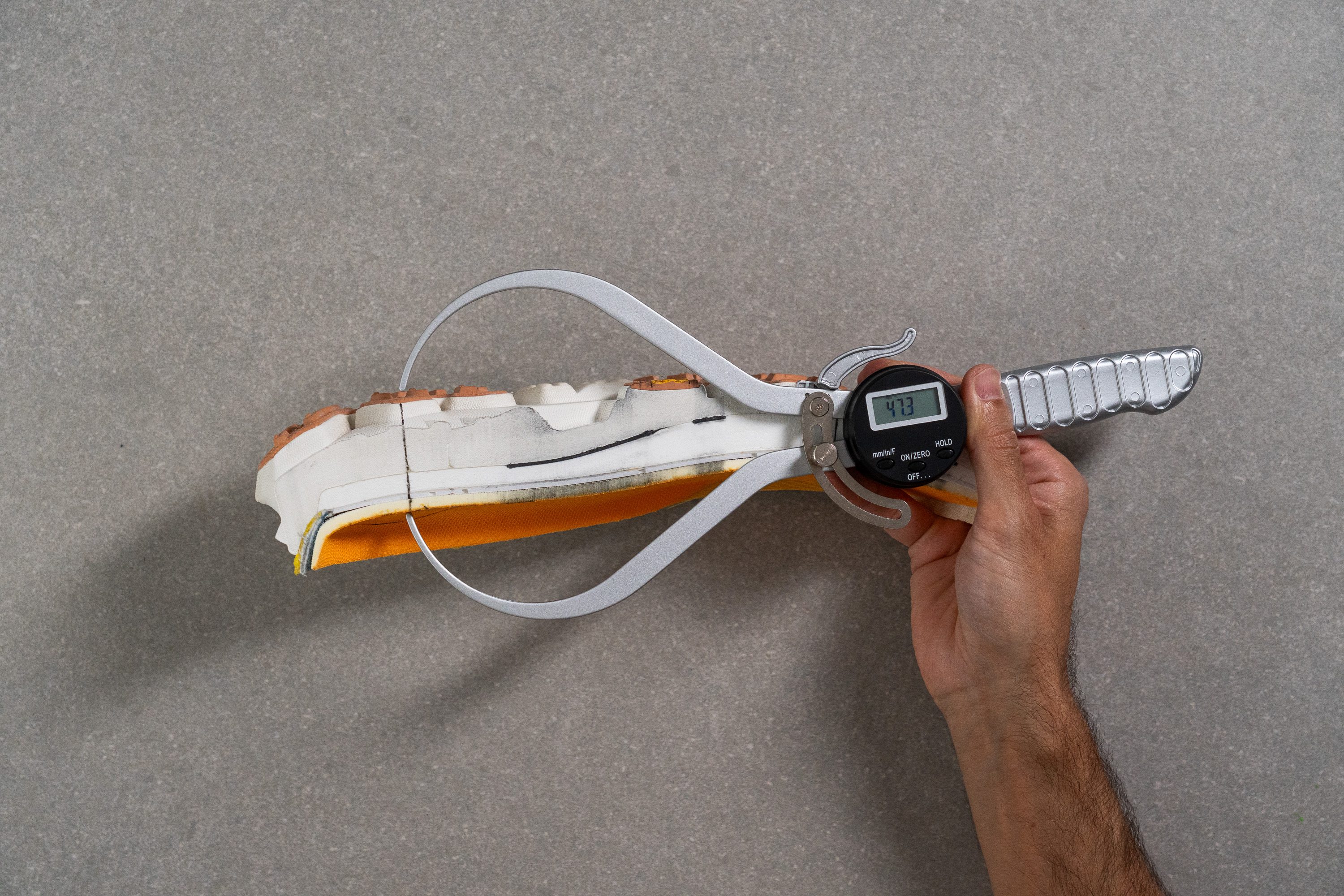
| Mafate X | 47.3 mm |
| Average | 32.6 mm |
Forefoot stack
The forefoot is also extremely tall at 36.7 mm. To put that into context, this is more than 4 mm higher than the heel stack average in our lab at the time of this review, and while the gap will shrink as shoes keep getting taller with every new release, it will still be a crazy stat.
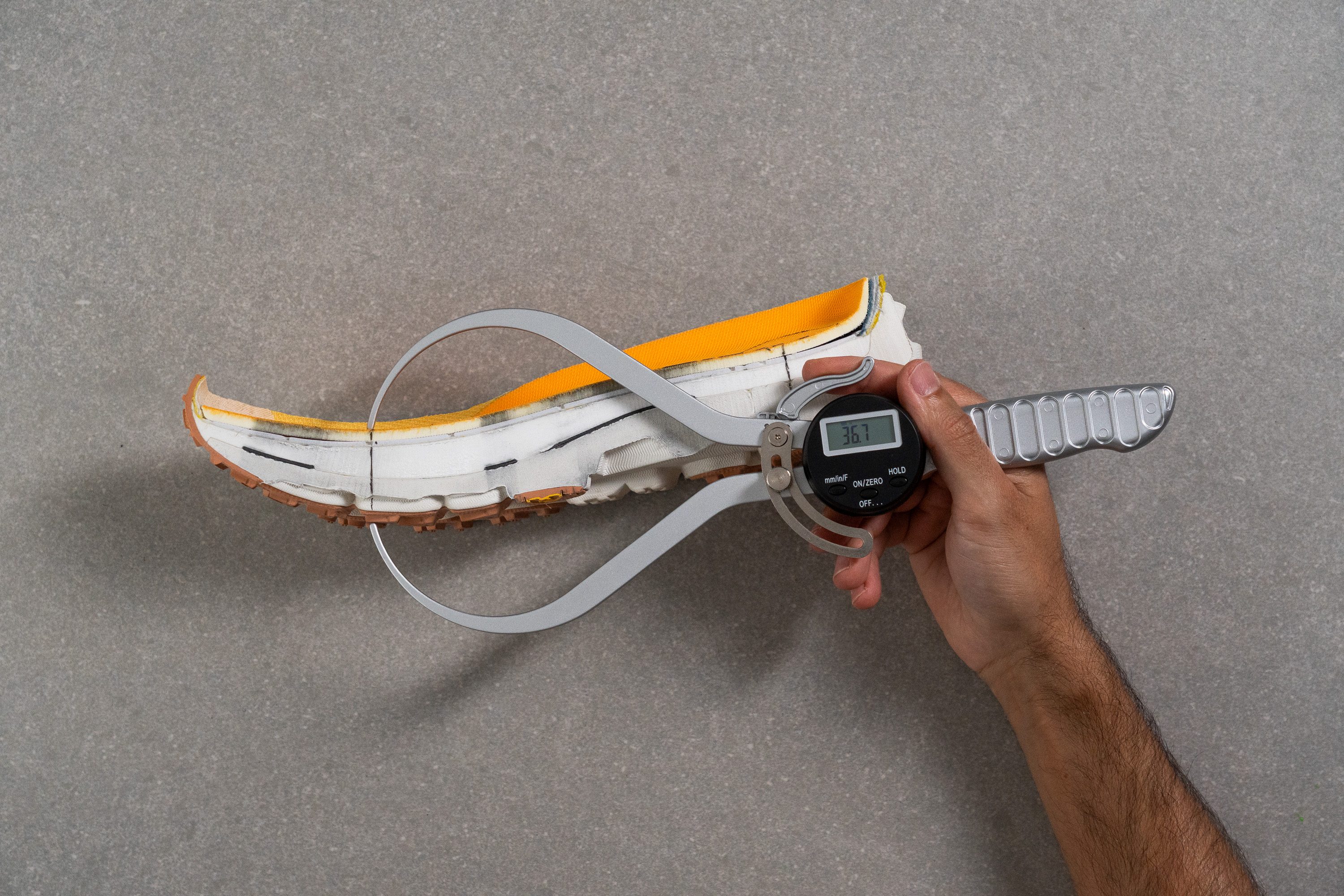
| Mafate X | 36.7 mm |
| Average | 25.1 mm |
Drop
HOKA is shifting toward higher drops in their recent road models, and it looks like they are doing the same in trail. The old 5 mm geometry is gone, and the Mafate X is now more heel-striker-friendly than ever with an official 8 mm and a real 10.6 mm from our measurements.

| Mafate X | 10.6 mm |
| Average | 7.6 mm |
Midsole softness
We are sure someone inside HOKA mentioned the option of using their CMEVA foam from shoes like the Clifton 10 to save some money here, but that would have made this shoe very, very heavy. Instead, the main layer of foam is made from lightweight, nitrogen-infused EVA foam like the one in the Mach 6. And that's very good news for us.
The feel of this foam is not very soft at 21.1 HA, and that makes sense since it is the layer that touches the ground first and needs to stabilize the ride for such a high-stack shoe.

| Mafate X | 21.1 HA |
| Average | 21.9 HA |
Secondary foam softness
The secondary layer of the Mafate X is the one that sits on top of the plate and closer to your foot, and it is also the best one with a super-satisfying feel.
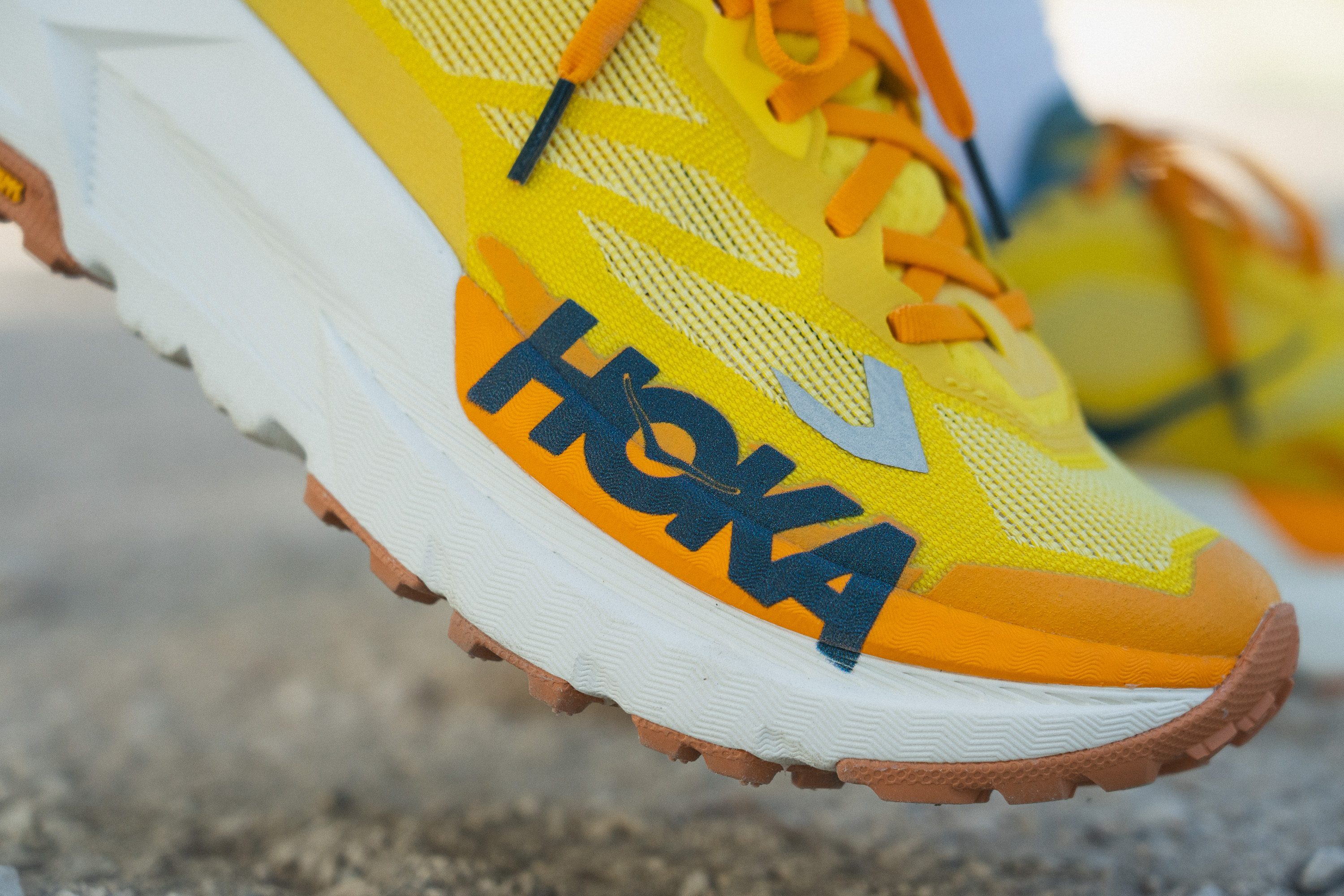
This is PEBA superfoam, the same material HOKA uses in elite-level supershoes like the HOKA Rocket X 3. It delivers a very plush underfoot sensation at 13.8 HA in our Shore A durometer along with an energetic ride.

| Mafate X | 13.8 HA |
| Average | 25.5 HA |
Rocker
The Mafate X uses a very rocker-heavy shape because a midsole this massive needs strong forward curvature to move smoothly. This is one of the stiffest trail shoes we have ever tested, and the rocker helped us roll forward instead of fighting the rigidity.
That said, the ride feels unnatural (especially for walking or hiking) because the shoe barely bends, so if you prefer something that adapts more to your foot movement, a model with less stack and a flatter midsole like the Altra Experience Wild 2 is a better idea.
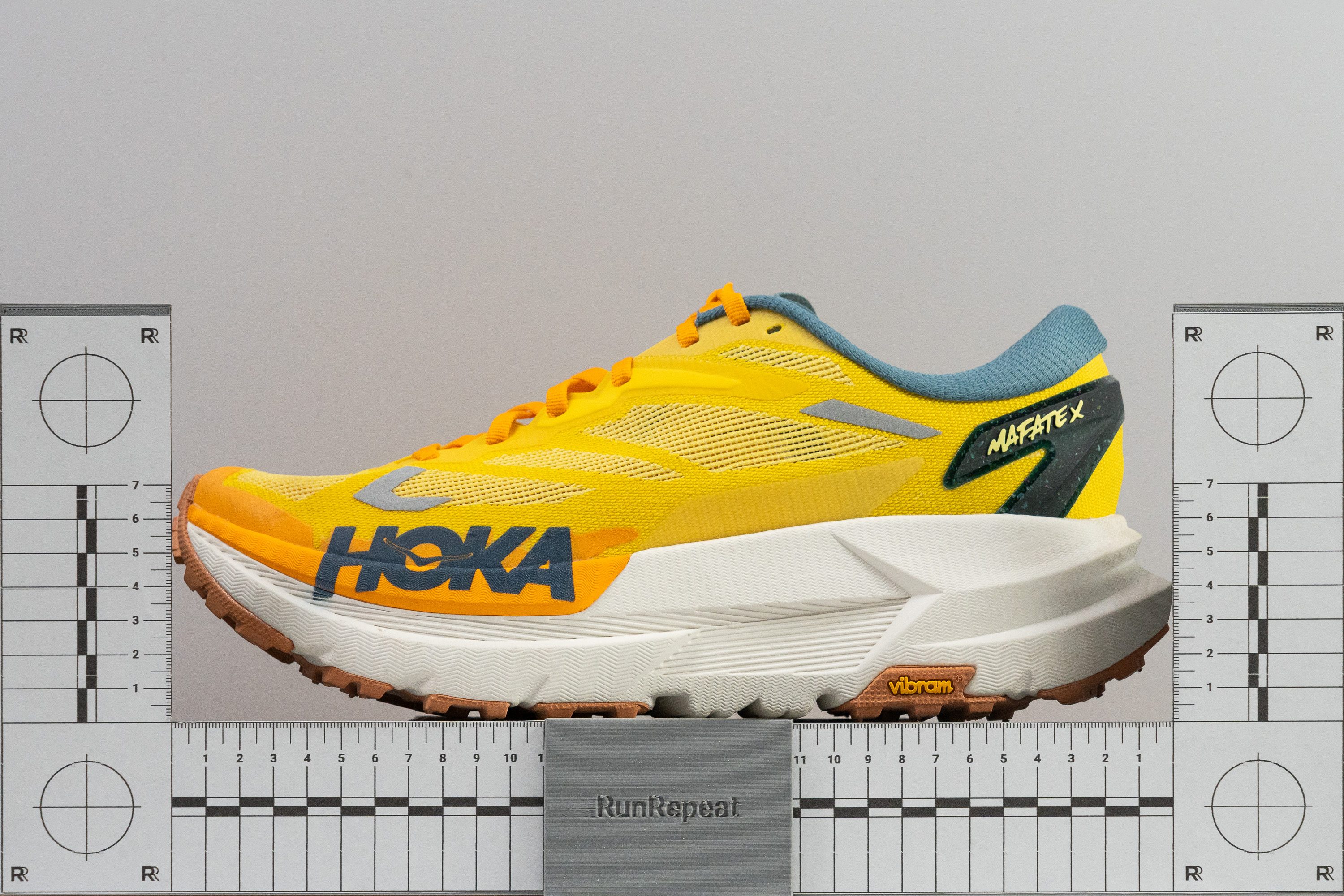
Plate
As any HOKA model with an X in the name, this shoe includes a plate inside. In the Mafate X, however, the plate is not the classic full-length carbon sheet found in road supershoes like the HOKA Rocket X 3. It is a forked design with two large cutouts, one placed under the forefoot and another under the heel, as you can clearly see in the teardown image.
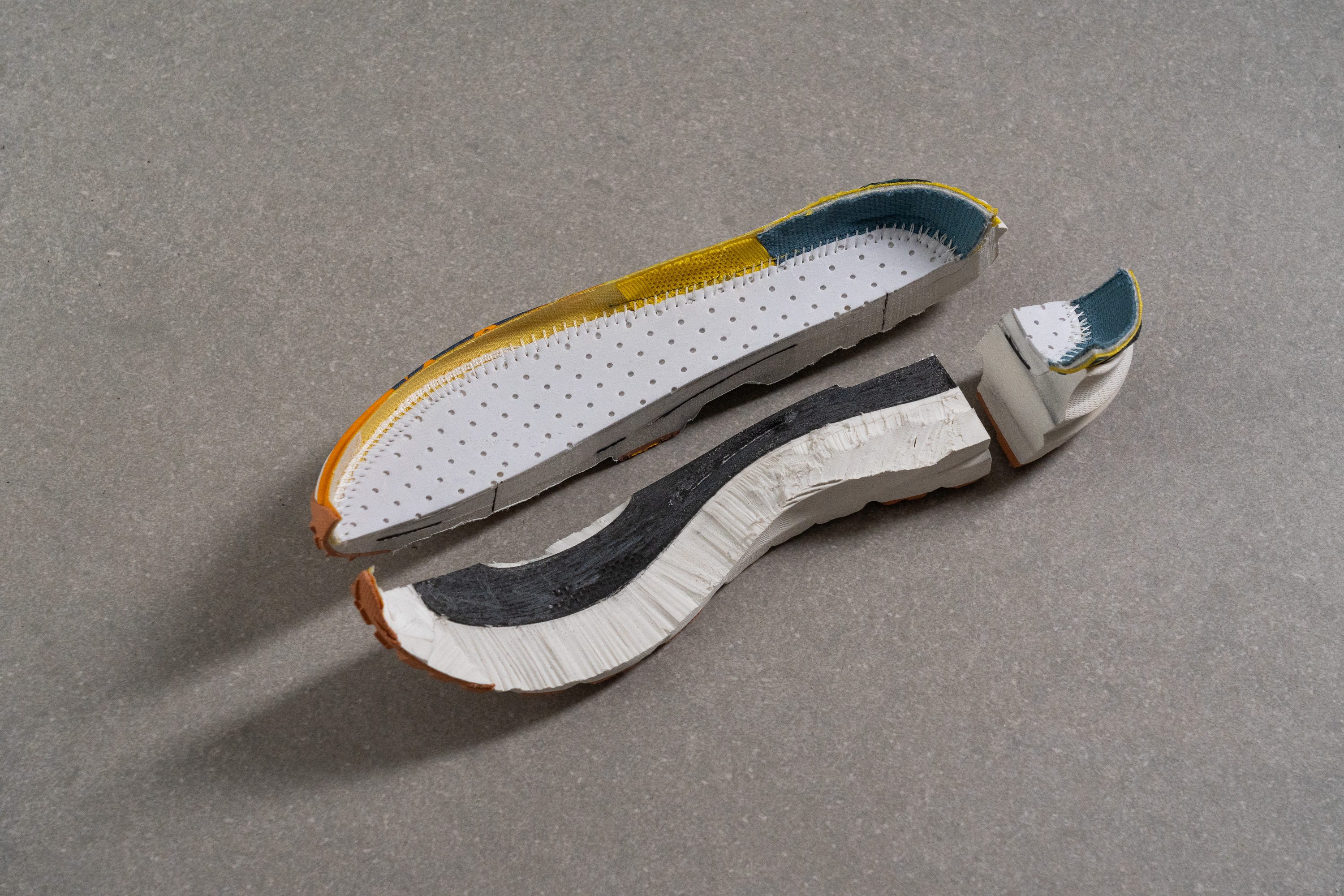
Because trail running demands constant micro-adjustments on uneven surfaces, a shoe needs some degree of lateral flex instead of a rigid, race-oriented structure. Consequently, brands often rely on non-continuous plates like this one.
Size and fit
Size
Width / Fit
We found the fit pretty Hoka-esque when we tested the Mafate X, although there is a bit of tightness through the midfoot, probably to add an extra layer of stability.
However, our first measurement showed a wider-than-usual 98.1 mm, but we still think it is not a good choice for wide feet, and soon you will see why.
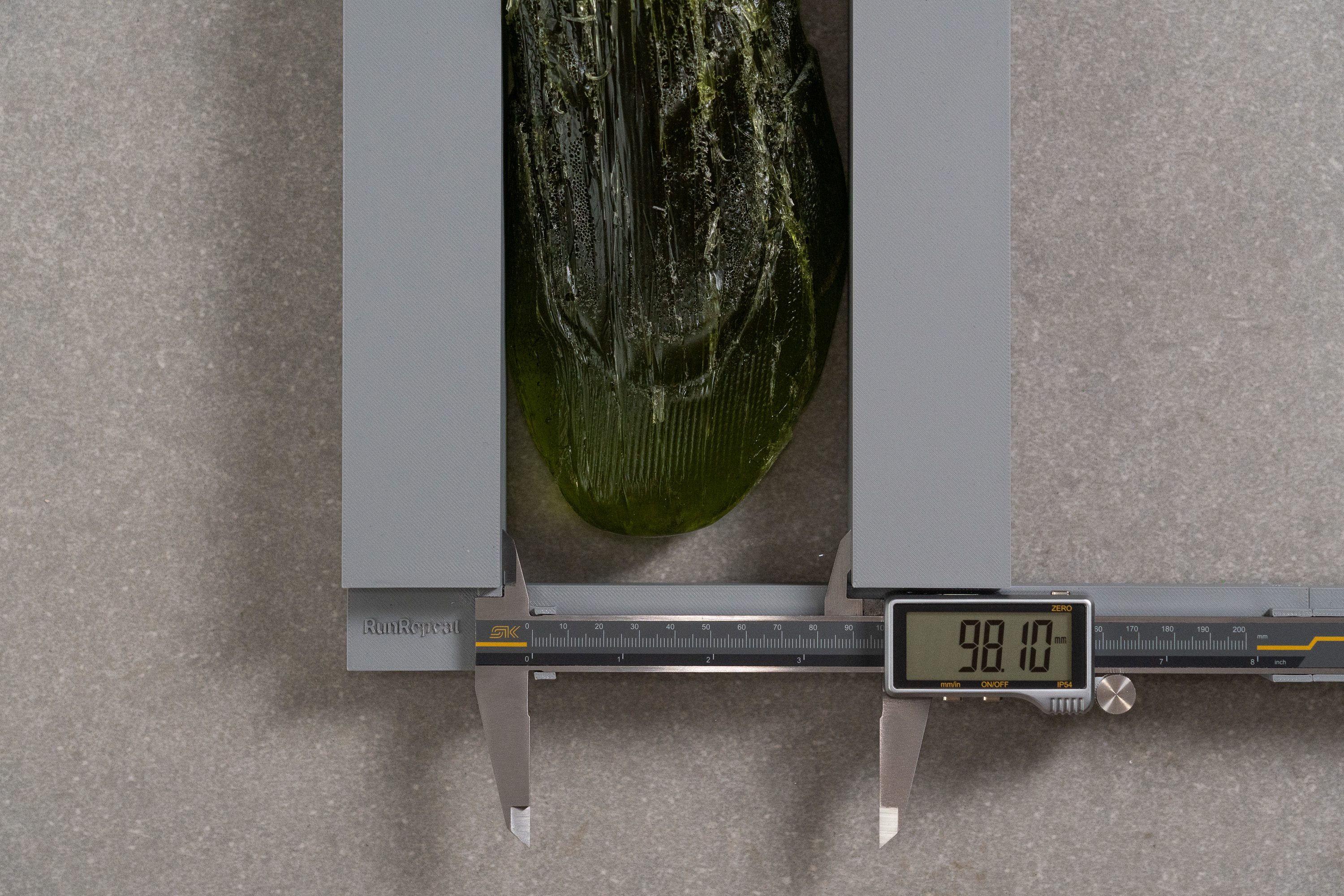
| Mafate X | 98.1 mm |
| Average | 95.6 mm |
Toebox width
The reason is that, like many HOKA models, the toebox has a strong taper that finishes at 72.8 mm.
This is not ideal for wide feet that need space for toe splay and explains why, even with a slightly roomier first measurement, the shoe still feels like a classic HOKA with a tight midfoot and toebox.
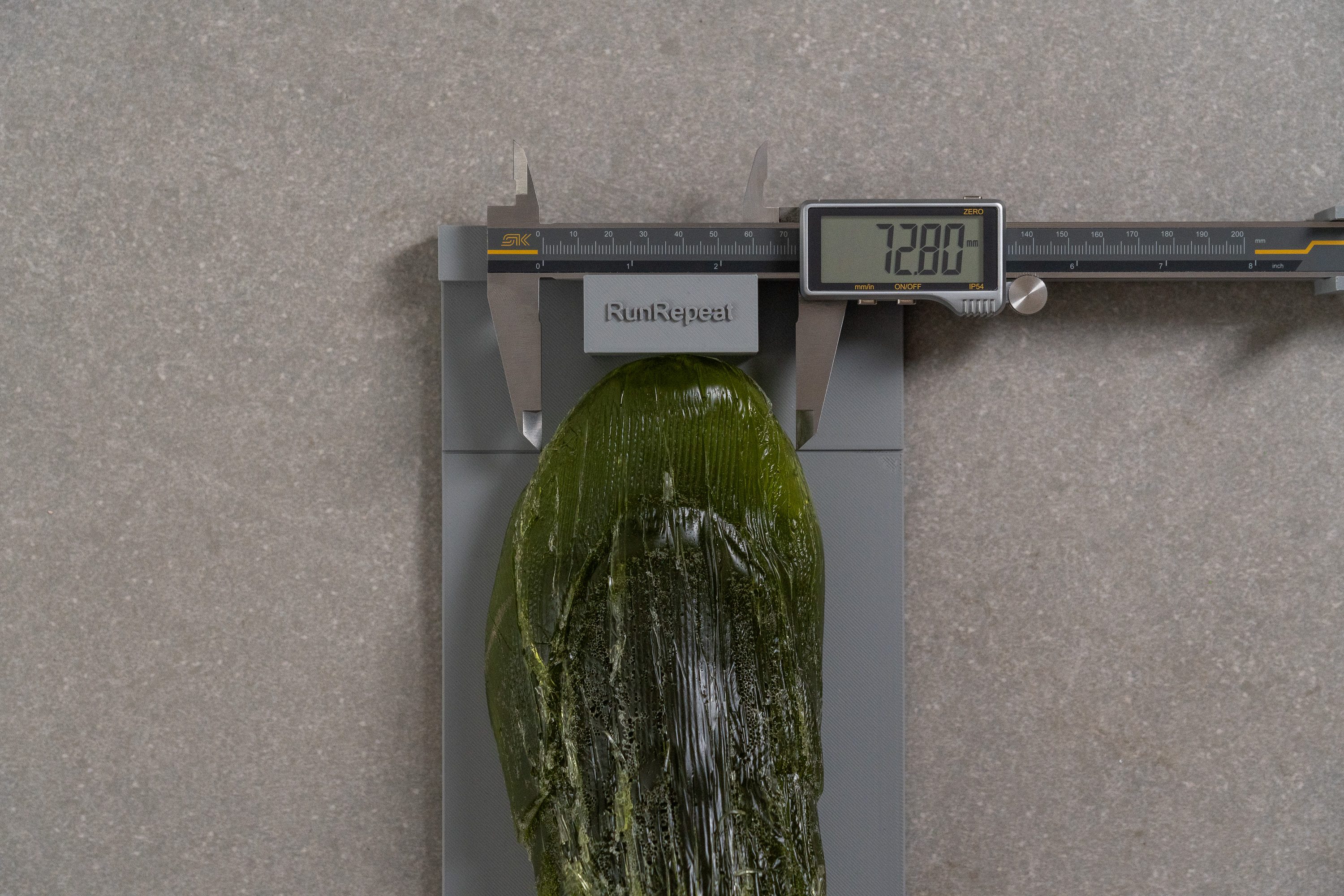
| Mafate X | 72.8 mm |
| Average | 74.6 mm |
Toebox height
The toebox adds another layer of security to the ride with a height of just 25.0 mm.
You also have to consider that the upper comes with plenty of reinforcements and a rigid fabric, so it does not stretch at all, and it seems to us that HOKA is once again favoring runners who prefer a snug, secure feel.
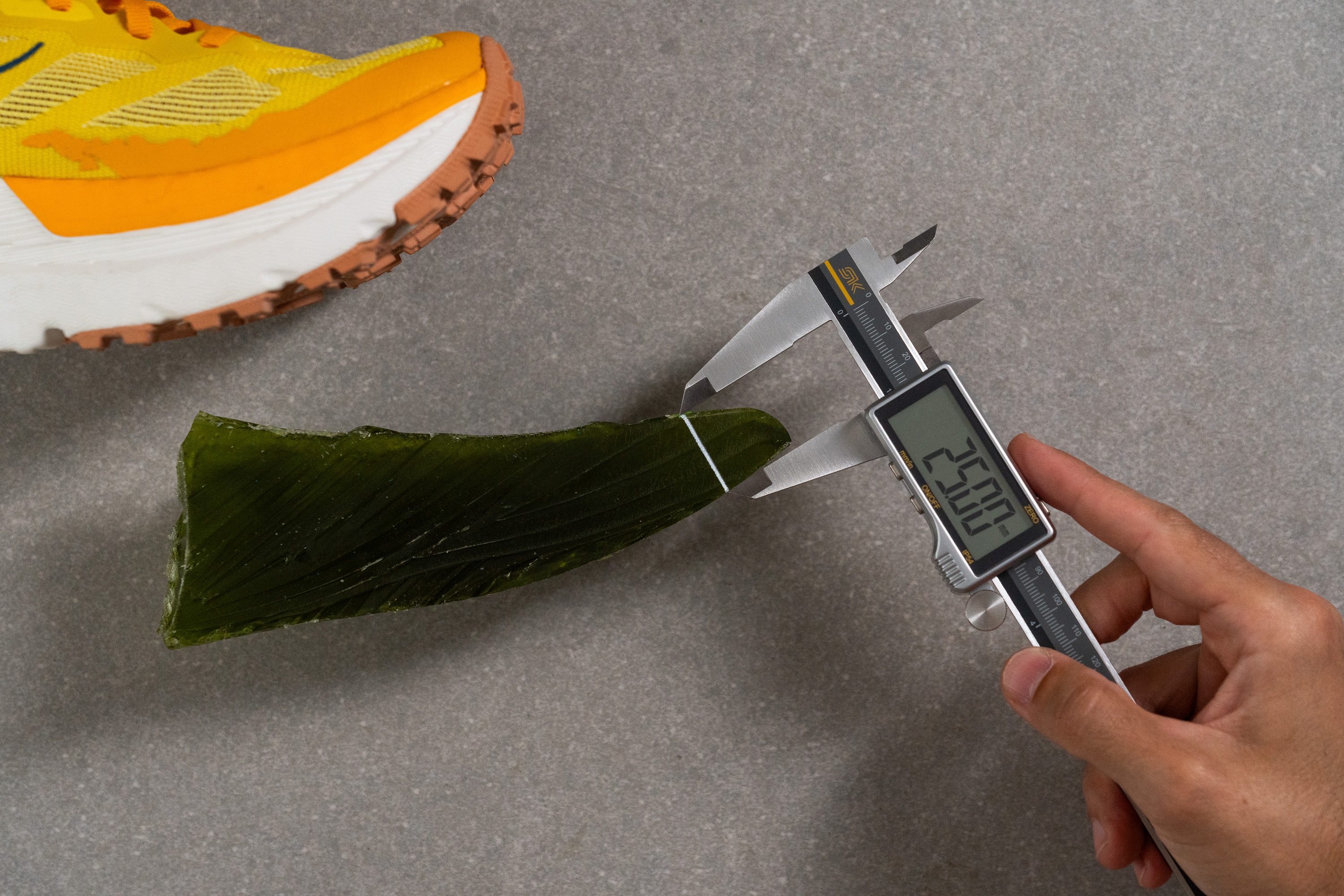
| Mafate X | 25.0 mm |
| Average | 27.0 mm |
Traction / Grip
Forefoot traction
Having Vibram as the rubber supplier is expected for a shoe at this price, and we were glad to see that HOKA delivered. The Megagrip outsole scored 0.72 in our SATRA TM144 grip test, outperforming most other trail shoes.
| Mafate X | 0.72 |
| Average | 0.60 |
Lug depth
The lug depth is set at 3.0 mm, which clearly makes this shoe a strong choice for easy terrain, ready for long miles on gravel roads or groomed trails.

Adding deeper lugs for more versatility would not help with this shoe, as the stack height is so extreme that tackling highly technical trails was still a bad idea even with 5-mm lugs.

| Mafate X | 3.0 mm |
| Average | 3.5 mm |
Outsole design
The Mafate X features low rubber coverage focused on key impact zones, leaving large sections of exposed foam to reduce a bit of weight. But despite this, the compound from Vibram is strong and reliable, offering solid traction.
We discovered that the heel uses wide lugs arranged in a backward-facing pattern to improve braking and give a safe feel on descents. The midfoot switches to smaller and flatter foam pods with light texture, acting more as transition zones and helping the shoe flex a bit.
The forefoot moves to sharper triangular lugs with more defined edges, placed in a forward-facing layout that improves climbing and push-off motion.
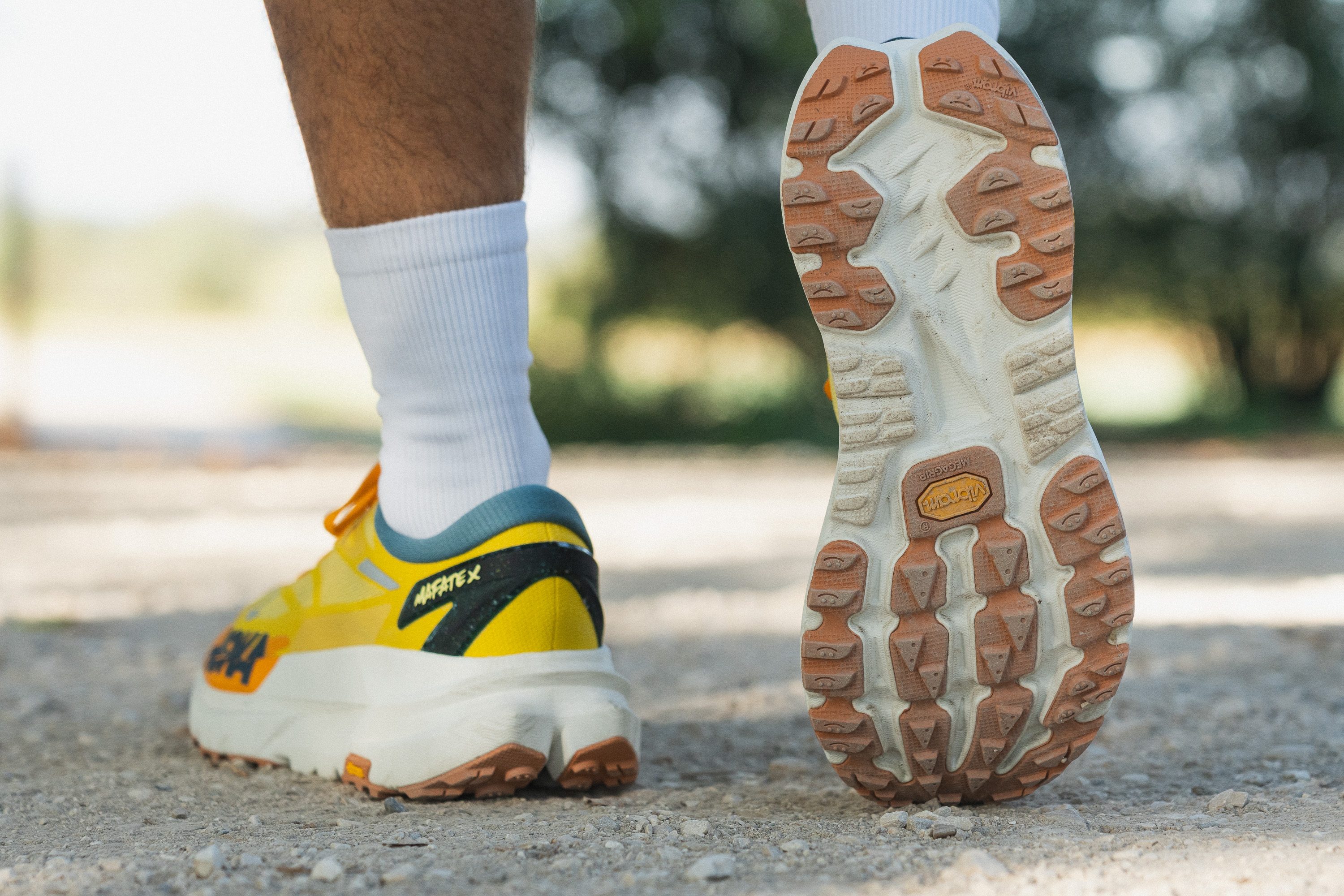
Flexibility / Stiffness
This shoe is huge and includes a carbon plate, so expecting real flexibility makes no sense. True to its design and size, it scored near the top for stiffness in our 30 degree test with 22.9N.
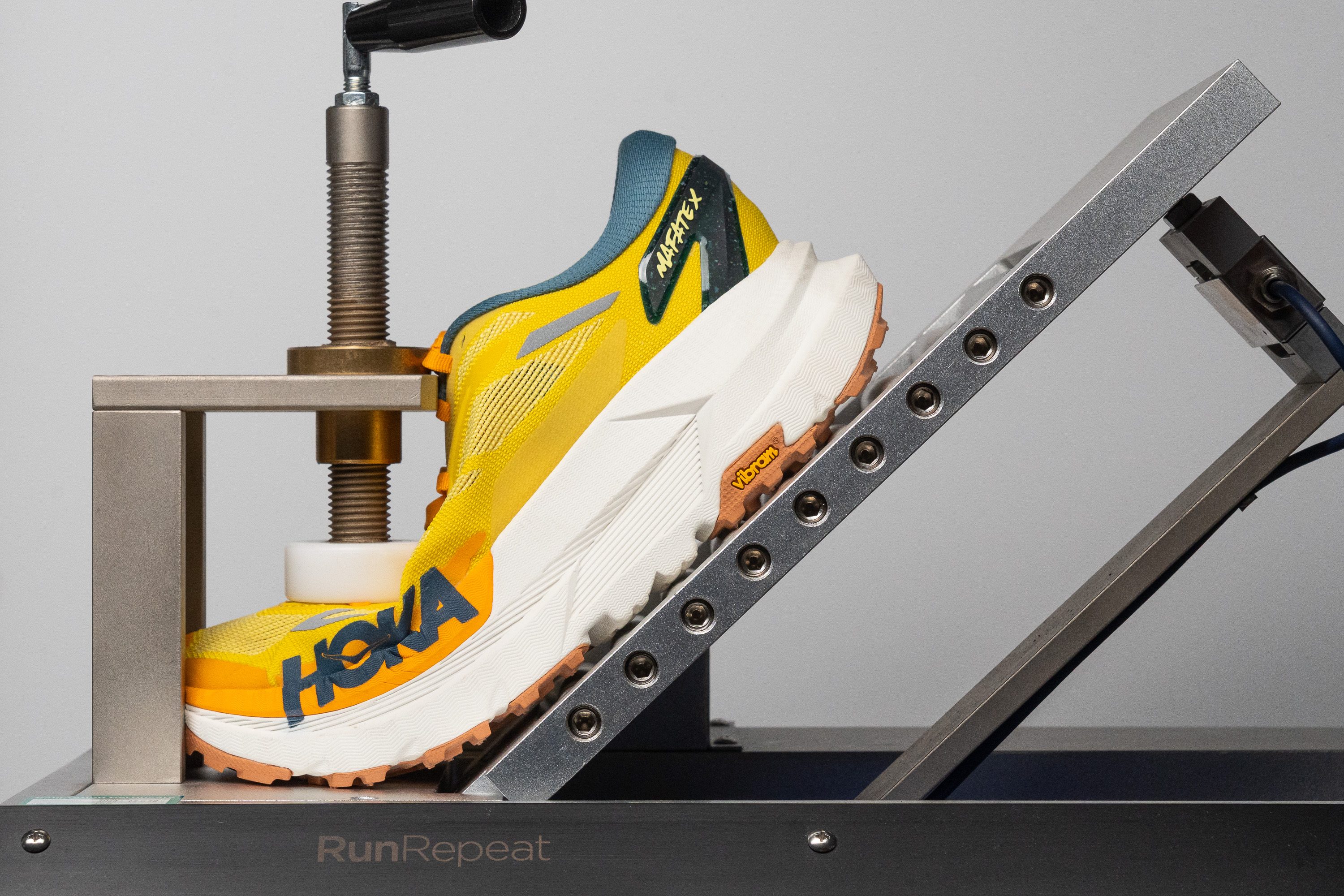
| Mafate X | 22.9N |
| Average | 14.6N |
Weight
We noted that HOKA tried several smart ways to control the weight of this shoe, using light modern foams, low outsole coverage, and small design tricks, but the huge size of the Mafate X still makes it heavy.
But the truth is that when we tested it on our scale, it came in at 11.8 oz or 335g, making it one of the heaviest trail shoes we have measured in the lab.
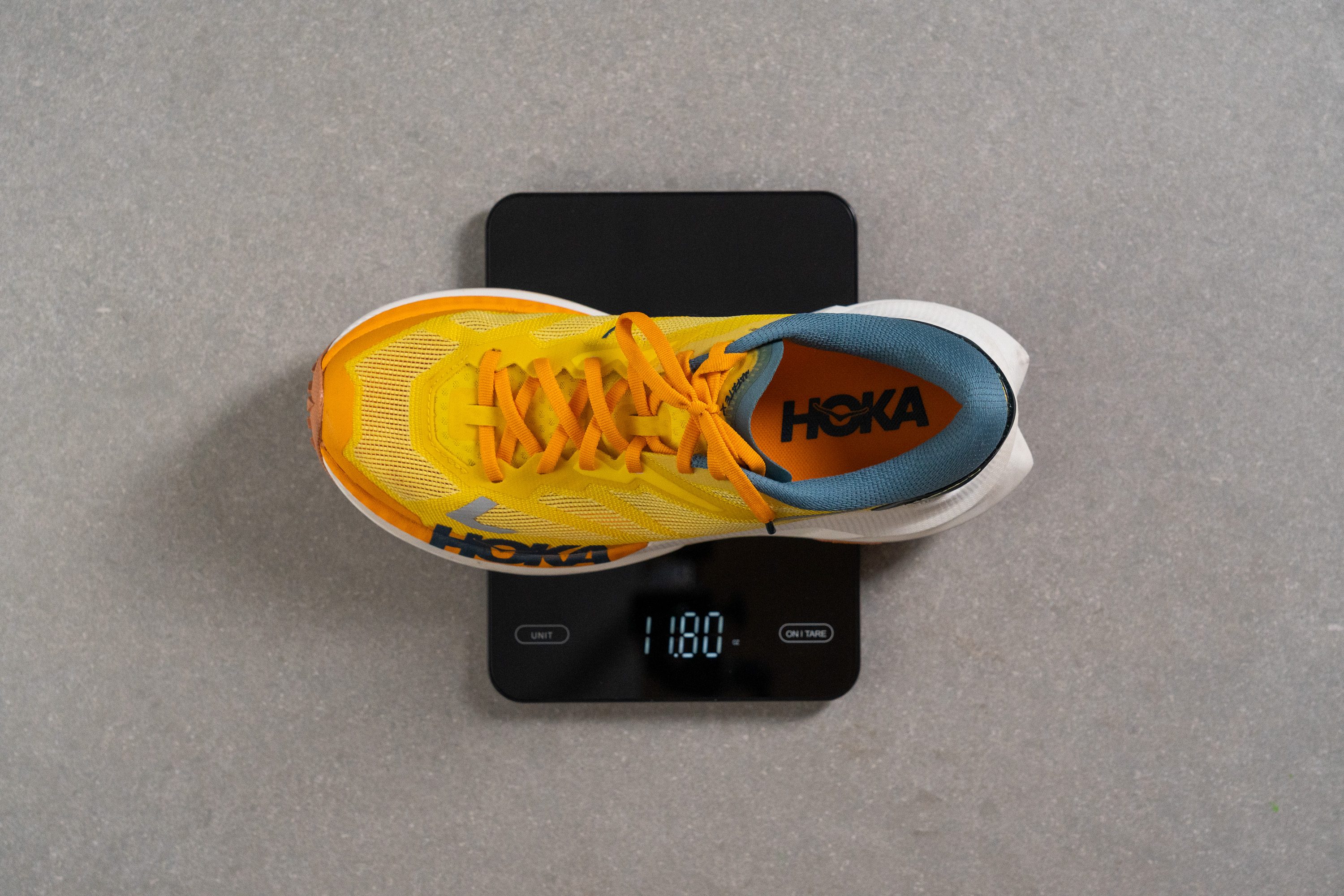
| Mafate X | 11.8 oz (335g) |
| Average | 10.2 oz (289g) |
Breathability
It is hard to get good airflow in a trail shoe because the upper needs tougher materials to handle rocks and dirt.
HOKA managed to do it, and for this high price, we expected strong performance here. Using our smoke machine, we saw steady ventilation and gave it a 4/5 on our scale.
We also moved the upper over a LED light to study the design, and we found several airy zones that help with breathability and weight savings.
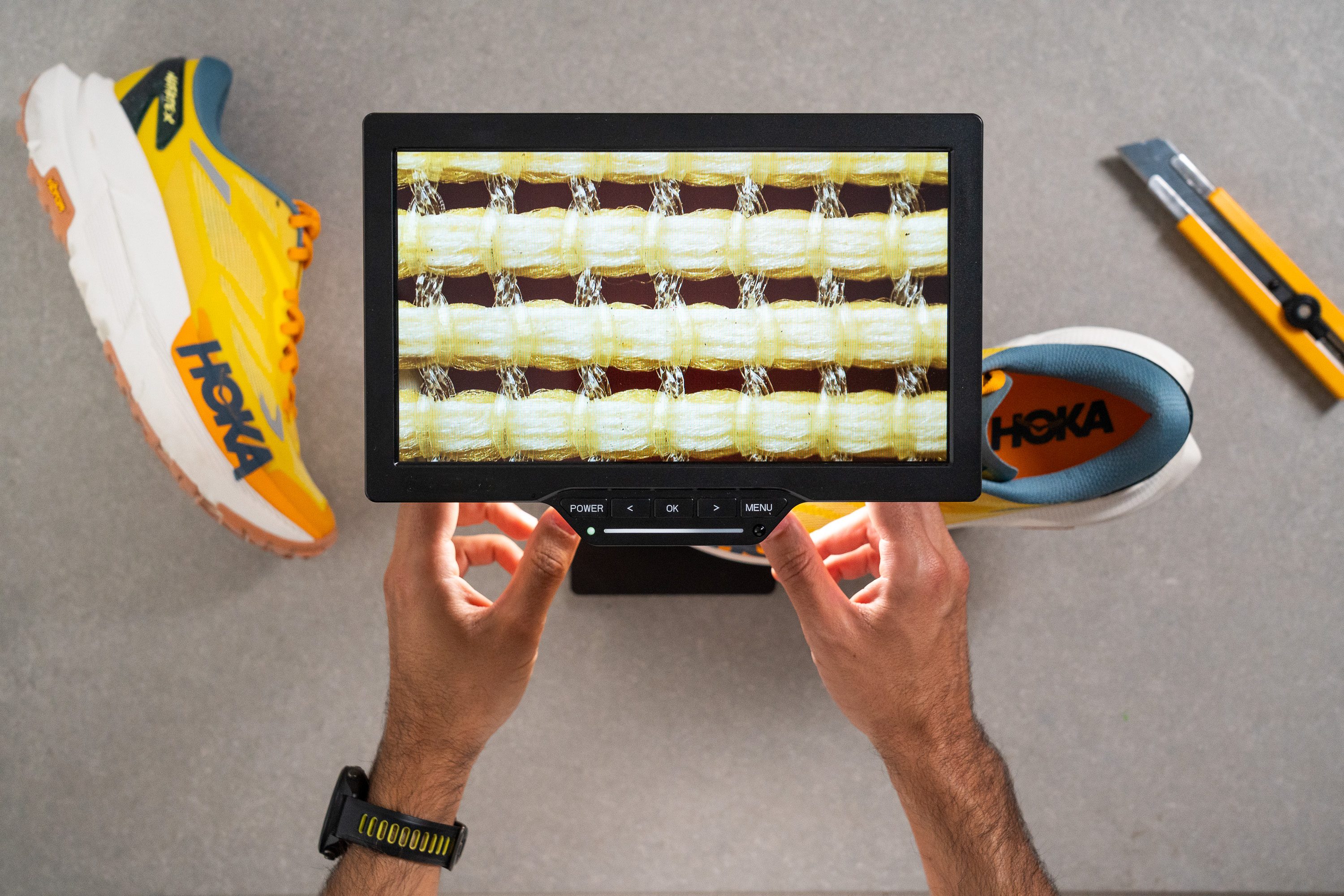
Under the microscope, the mesh looked impressive for airflow, with many tiny holes that let warm air escape while still keeping a solid shape.

The downside is that this type of mesh can rip on rough terrain, so like the rest of the shoe, it's better for easier trails.
This upper is quite interesting, and it is one of those that deserves a slow, careful look. The padding feels good, and the tongue brings nice comfort, but not at the level of some road max-stack shoes because the weight issue places some limits.
| Mafate X | 4 |
| Average | 3.2 |
Stability
Lateral stability test
Now that we are used to maximalist shoes with super-sized midsoles, we cannot really be surprised that a shoe this tall can stay stable, and we discovered that the Mafate X delivers a strong and confidence-boosting level of support.
HOKA added lots of stability tweaks, including a black plastic piece in the heel to keep it centered, a very stiff internal support piece, wide dimensions even in the midfoot, and the carbon plate we covered before.
Torsional rigidity
As expected, it is basically impossible to twist this shoe, and we gave it a 5 out of 5 for torsional rigidity. Even the current armwrestling champion would struggle to twist a bit the Mafate X.
| Mafate X | 5 |
| Average | 3.6 |
Heel counter stiffness
The heel counter is also impressively firm and earns another 5/5, giving the heel strong stability, although runners who are sensitive to stiff designs may not enjoy this shoe.
| Mafate X | 5 |
| Average | 3.1 |
Midsole width - forefoot
The dimensions of the shoe are huge from heel to toe.
Up front, we measured 121.2 mm, which helps keep landings centered, although it also creates a clunky and cumbersome feel that is not meant for twisty terrain.
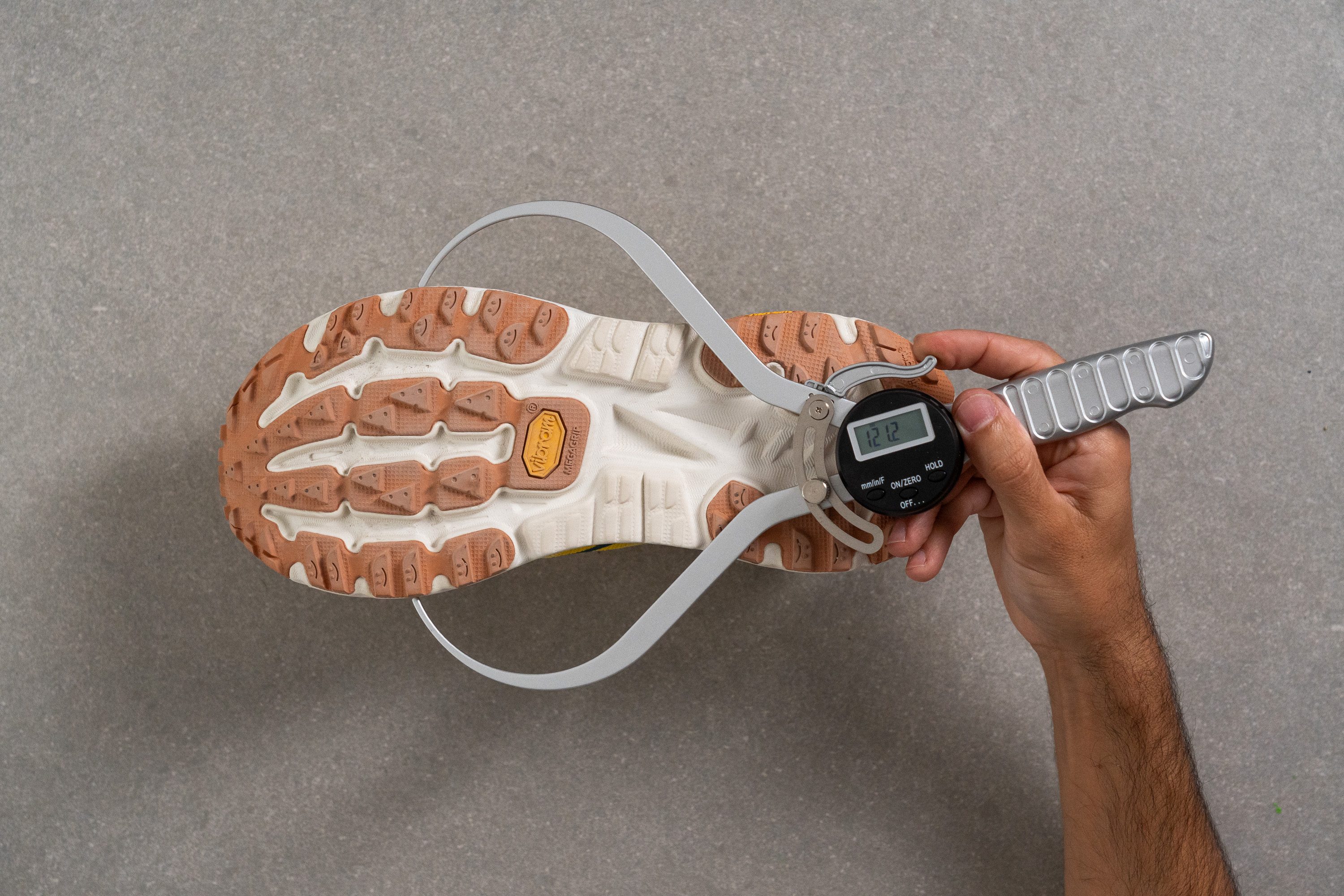
| Mafate X | 121.2 mm |
| Average | 112.7 mm |
Midsole width - heel
The same happens in the heel, where we measured 102.1 mm, a width that reminds us of road stability shoes like the HOKA Gaviota 5.
For this reason, even with its massive height, the Mafate X works well for runners who need extra stability.
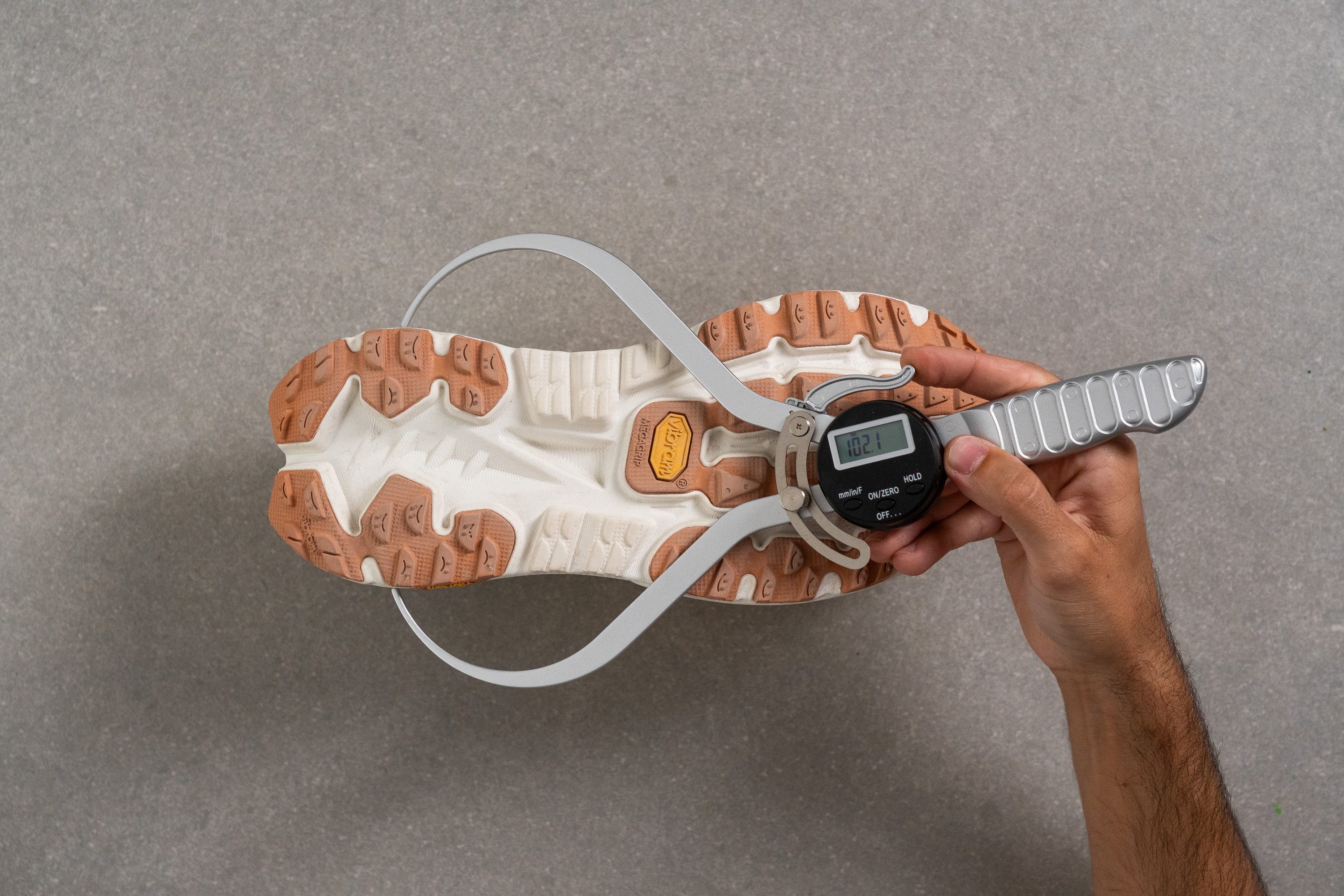
| Mafate X | 102.1 mm |
| Average | 89.8 mm |
Durability
Toebox durability
When we analyzed the upper for ventilation, we discovered right away that toebox durability was not going to be high, and after testing hundreds of road and trail shoes we know that such tiny holes are prone to tear with abrasion, which is why the Mafate X scored 2/5.
We would not flip the result, because it is more important for this shoe to stay breathable than extra-durable in the upper, as it is designed for easy terrain where durability plays a smaller role.
| Mafate X | 2 |
| Average | 3.1 |
Heel padding durability
On a more positive note, the Mafate X heel padding delivered an excellent result with a 5/5, and we do not expect any early damage in this area.
| Mafate X | 5 |
| Average | 3 |
Outsole durability
We tested the Vibram Megagrip outsole many times in our lab and we discovered that it always performs very well. After checking this version we found only 0.8 mm of rubber erased, showing positive durability in yet another shoe.
| Mafate X | 0.8 mm |
| Average | 0.9 mm |
Outsole thickness
HOKA used a 2.3-mm thick outsole, probably to protect the delicate supercritical EVA foam, but this has a big impact on the shoe’s weight and might be something they consider reducing in future editions.
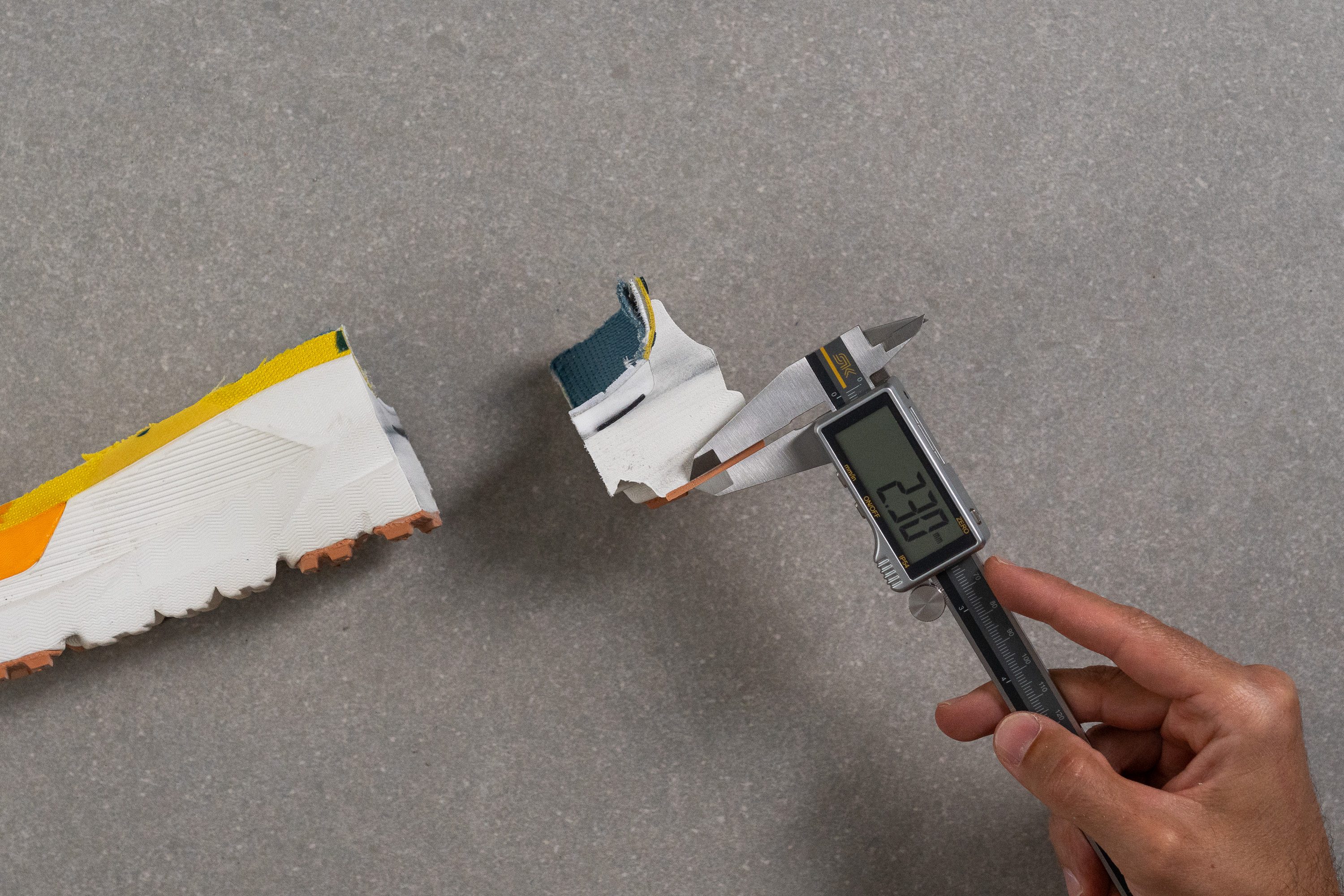
| Mafate X | 2.3 mm |
| Average | 2.2 mm |
Misc
Insole thickness
The insole that comes with the shoe is not made from average EVA foam. Instead HOKA honored the high price by using TPEE foam similar to Lightstrike Pro at 4.7 mm of thickness and... yes, it might be the only part of this model that isn’t oversized.
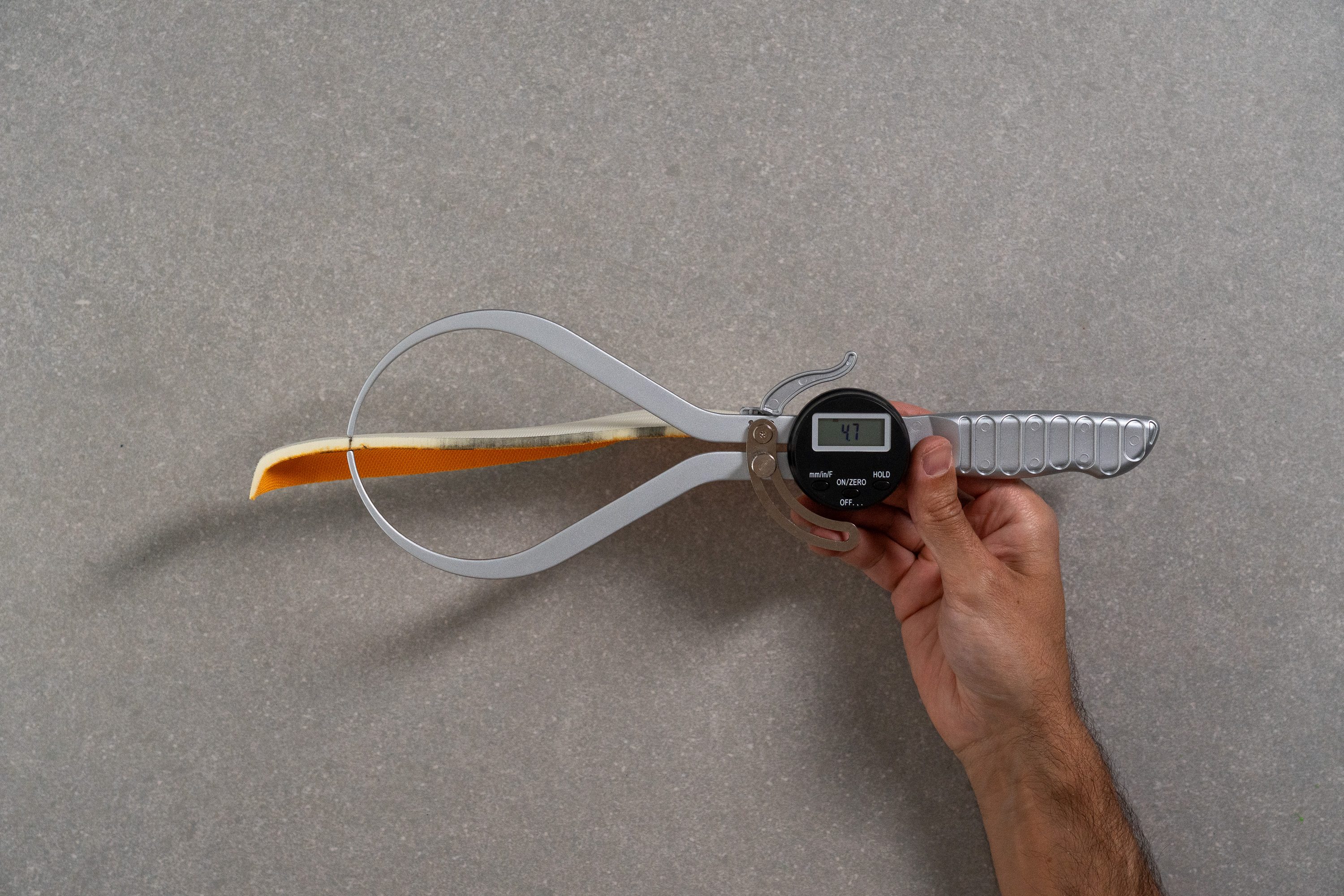
| Mafate X | 4.7 mm |
| Average | 4.7 mm |
Removable insole
If you want to increase or reduce the cushioning in the Mafate X, you can simply use an insole that is thinner or thicker based on your preference, or choose one that offers extra support.

| Mafate X | Yes |
Midsole softness in cold (%)
The more PEBA, the better, and this is another clear example. Instead of the usual high readings we get from EVA foams in this test, we discovered that the Mafate X became only 9% firmer after 20 minutes in our freezer, which is pretty impressive.

| Mafate X | 9% |
| Average | 26% |
Reflective elements
We found two small but useful reflective elements on the upper of the Mafate X.
| Mafate X | Yes |
Tongue padding
Despite its high price, we discovered that HOKA kept the fit of the Mafate X very safe, with laces running through punched eyelets that are strong and cannot tear like lace loops. This simple design choice gives the upper a durable feel.

The tongue aims for a light mix of protection and weight savings. It uses 6.0 mm of non-continuous padding because it is built from two articulated layers instead of one, which helps reduce a small amount of weight and improve comfort. That’s the kind of small detail we expect to see in a premium-priced shoe.
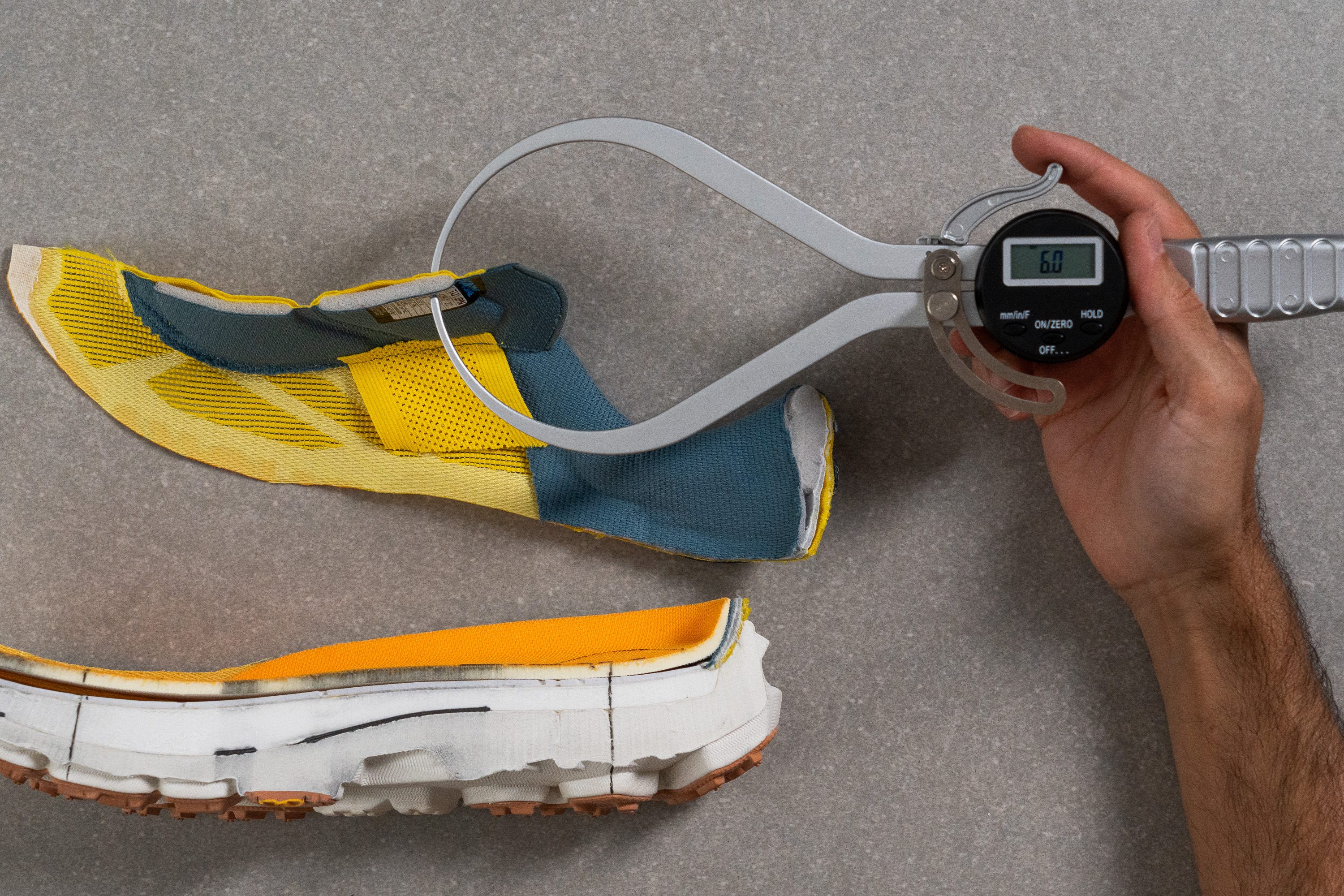
| Mafate X | 6.0 mm |
| Average | 6.4 mm |
Tongue: gusset type
The tongue is semi-gusseted, which is not the best setup for a trail shoe since a full gusset offers better protection against dust and small debris entering the toebox. However, given how tall and heavy this shoe is, this configuration might actually be the most balanced choice.
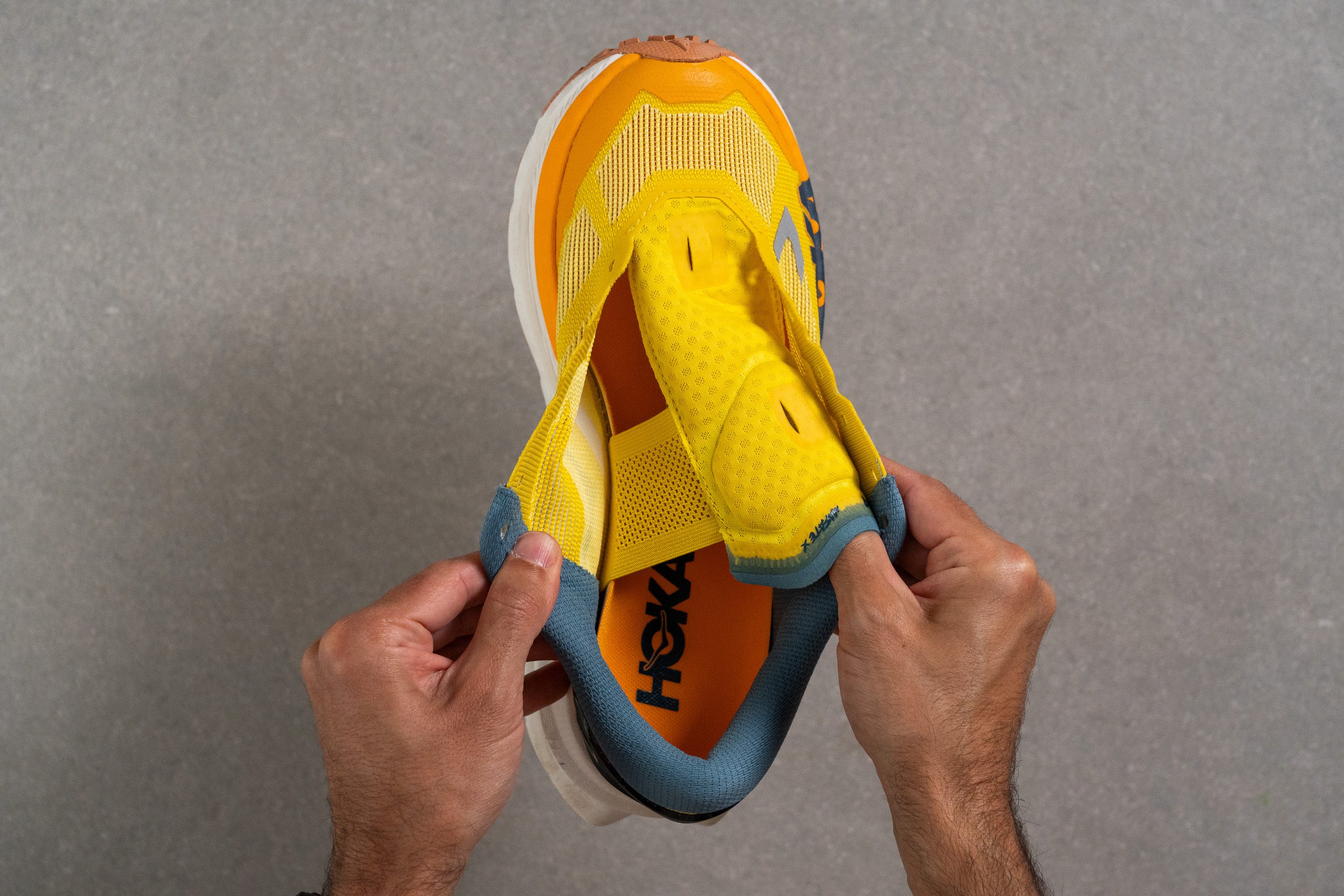
| Mafate X | Both sides (semi) |
Price
The Mafate X is not ideal for runners with a sensitive budget because it ranks among the most expensive trail shoes available. However, it delivers top-tier tech from top to bottom with PEBA foam, a carbon plate, and Vibram rubber, and brands offering a truly distinctive package know they can charge a bit more for that.
| Mafate X | $225 |
| Average | $152 |
Heel tab
The heel design feels unusual for a HOKA, as we are so used to the extended heel collar that seeing a standard shape looks strange. Maybe some designer from ASICS moved to HOKA?

| Mafate X | None |

